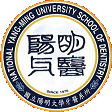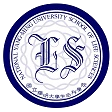Team:NYMU-Taipei/modeling/m6
From 2014.igem.org
| Line 17: | Line 17: | ||
5. $K_{t1}$:Translation efficiency<br> | 5. $K_{t1}$:Translation efficiency<br> | ||
6. $K_{deg\_luxI}$:luxI degredation<br> | 6. $K_{deg\_luxI}$:luxI degredation<br> | ||
| + | 7. $n1$:hill coefficient<br> | ||
(2)$$\frac{d[luxR \; mRNA]}{dt}=P_{const} - K_{deg\_mluxR} [luxR \; mRNA]$$ | (2)$$\frac{d[luxR \; mRNA]}{dt}=P_{const} - K_{deg\_mluxR} [luxR \; mRNA]$$ | ||
$$\frac{d[luxR]}{dt}= K_{t2} [luxR \; mRNA] - K_{deg\_luxR} [luxR]-K_{on}[AHL]^2[luxR]+K_{off}[AHLluxR]$$ | $$\frac{d[luxR]}{dt}= K_{t2} [luxR \; mRNA] - K_{deg\_luxR} [luxR]-K_{on}[AHL]^2[luxR]+K_{off}[AHLluxR]$$ | ||
| Line 26: | Line 27: | ||
6. $K_{off}$: reaction rate of $AHLluxR(complex) \rightarrow 2AHL+luxR $<br> | 6. $K_{off}$: reaction rate of $AHLluxR(complex) \rightarrow 2AHL+luxR $<br> | ||
(3)$$\frac{d[AHL]}{dt}= K_{AHL} [luxI] +2 K_{off}[AHLluxR] -2 K_{on}[AHL]^2[luxR] - K_{deg\_AHL}$$ | (3)$$\frac{d[AHL]}{dt}= K_{AHL} [luxI] +2 K_{off}[AHLluxR] -2 K_{on}[AHL]^2[luxR] - K_{deg\_AHL}$$ | ||
| + | 1. $K_{AHL}$:synthesis rate of AHL by LuxI<br> | ||
(4)$$\frac{d[AHLluxR]}{dt}= K_{on}[AHL]^2[luxR] - K_{off}[AHLluxR]$$ | (4)$$\frac{d[AHLluxR]}{dt}= K_{on}[AHL]^2[luxR] - K_{off}[AHLluxR]$$ | ||
| + | 1. reaction of $2AHL+luxR \rightarrow AHLluxR(complex)$<br> | ||
(5)$$\frac{d[lysine \; gene \; mRNA]}{dt}=P_{luxR} \frac{[AHLluxR]^{n2}}{K_{d2}+[AHLluxR]^{n2}} - K_{deg\_mlys} [lysine \; gene \; mRNA]$$ | (5)$$\frac{d[lysine \; gene \; mRNA]}{dt}=P_{luxR} \frac{[AHLluxR]^{n2}}{K_{d2}+[AHLluxR]^{n2}} - K_{deg\_mlys} [lysine \; gene \; mRNA]$$ | ||
| - | $$\frac{d[lysine \; protein]}{dt}= K_{t2} [lysine \; gene \; mRNA] - K_{deg\_lys} [lysine \; protein]$$</p> | + | $$\frac{d[lysine \; protein]}{dt}= K_{t2} [lysine \; gene \; mRNA] - K_{deg\_lys} [lysine \; protein]$$ |
| + | 1. $P_{luxR}$:max pluxR promoter activity<br> | ||
| + | 2. $K_{d2}$:promoter-TF dissociation constant<br> | ||
| + | 3. $K_{deg\_mlyx}$:lysine gene mRNA degradation<br> | ||
| + | 4. $K_{t2}$:Translation efficiency<br> | ||
| + | 5. $K_{deg\_lys}$:lysine protein degredation<br> | ||
| + | 6. $n2$:hill coefficient<br> | ||
| + | </p> | ||
<h1>Result</h1> | <h1>Result</h1> | ||
<h1>Reference</h1> | <h1>Reference</h1> | ||
Revision as of 15:23, 8 October 2014
Introduction
This part aims to simulate the circuit of the Target part, which will be turn on when S. mutans is too much or phage is unable to control the S. mutans quorum.
LuxI coding sequence is controlled by nlmC promoter and threshold terminator. When the quorum of S. mutans is too much, the LuxI will be expressed and generate AHL-synthase. LuxR, on the other hand, is generated by E. coli constitutively. The LuxR and AHL can form a complex that can activate the pLuxR promoter. In our design, pLuxR promoter in E. coli can activate the lysine protein that can kill S. mutans only.
We model this part to see how the circuit works if phage is unable to control the S. mutans quorum, so the initial state of comE, the molecule that triggers the nlmC promoter, has a certain amount, which means the S. mutans is out of control.
System
(1)$$\frac{d[luxI \; mRNA]}{dt}=P_{nlmC} \frac{[comE]^{n1}}{K_{d1}+[comE]^{n1}} (1-a)^x - K_{deg\_mluxI} [luxI \; mRNA]$$
$$\frac{d[luxI]}{dt}= K_{t1} [luxI \; mRNA] - K_{deg\_luxI} [luxI]$$
1. $P_{nlmC}$:max nlmC promoter activity
2. $K_{d1}$:promoter-TF dissociation constant
3. $K_{deg\_mluxI}$:luxI mRNA degradation
4. $(1-a)^x$:terminator effect
5. $K_{t1}$:Translation efficiency
6. $K_{deg\_luxI}$:luxI degredation
7. $n1$:hill coefficient
(2)$$\frac{d[luxR \; mRNA]}{dt}=P_{const} - K_{deg\_mluxR} [luxR \; mRNA]$$
$$\frac{d[luxR]}{dt}= K_{t2} [luxR \; mRNA] - K_{deg\_luxR} [luxR]-K_{on}[AHL]^2[luxR]+K_{off}[AHLluxR]$$
1. $P_{const}$:constitutive promoter activity
2. $K_{deg\_mluxR}$:luxR mRNA degradation
3. $K_{t2}$:Translation efficiency
4. $K_{deg\_luxR}$:luxR degredation
5. $K_{on}$: reaction rate of $2AHL+luxR \rightarrow AHLluxR(complex)$
6. $K_{off}$: reaction rate of $AHLluxR(complex) \rightarrow 2AHL+luxR $
(3)$$\frac{d[AHL]}{dt}= K_{AHL} [luxI] +2 K_{off}[AHLluxR] -2 K_{on}[AHL]^2[luxR] - K_{deg\_AHL}$$
1. $K_{AHL}$:synthesis rate of AHL by LuxI
(4)$$\frac{d[AHLluxR]}{dt}= K_{on}[AHL]^2[luxR] - K_{off}[AHLluxR]$$
1. reaction of $2AHL+luxR \rightarrow AHLluxR(complex)$
(5)$$\frac{d[lysine \; gene \; mRNA]}{dt}=P_{luxR} \frac{[AHLluxR]^{n2}}{K_{d2}+[AHLluxR]^{n2}} - K_{deg\_mlys} [lysine \; gene \; mRNA]$$
$$\frac{d[lysine \; protein]}{dt}= K_{t2} [lysine \; gene \; mRNA] - K_{deg\_lys} [lysine \; protein]$$
1. $P_{luxR}$:max pluxR promoter activity
2. $K_{d2}$:promoter-TF dissociation constant
3. $K_{deg\_mlyx}$:lysine gene mRNA degradation
4. $K_{t2}$:Translation efficiency
5. $K_{deg\_lys}$:lysine protein degredation
6. $n2$:hill coefficient
 "
"




















